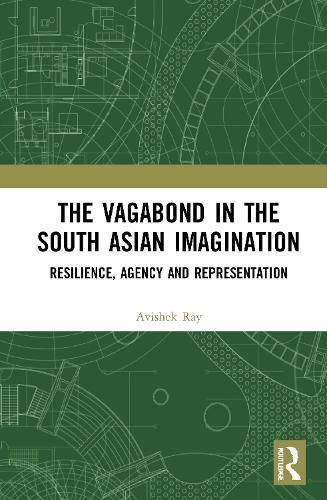Readings Newsletter
Become a Readings Member to make your shopping experience even easier.
Sign in or sign up for free!
You’re not far away from qualifying for FREE standard shipping within Australia
You’ve qualified for FREE standard shipping within Australia
The cart is loading…






This book discusses the epistemic foundation of the heuristic construct ‘vagabond’ and the convergence between the politics of itinerancy and that of dissent in the context of South Asia.
It describes the fraught relationship between ‘native’ itinerant practices and techniques of governmentality which have furnished different categorizations and taxonomies of mobility. The book demonstrates the historical seismic breaks - from the Orientalist to the post-Orientalist, from the premodern to the modern, and from the colonial to the post-colonial - in the representation of the vagabond in the juridico-political imagination, in historiography and cultural articulation. For instance, the drunk European sailor, the quasi-religious mendicant, and the helpless famine refugee have all been referred to as ‘vagabonds’ in the colonial archive. This book examines the histories and conditions behind these conceptual overlaps, as well as the uncanny associations among categories that uneasily coexist and mirror each other as subsets of a vast range of phenomena, which may loosely be called ‘vagabond(age)’.
This volume will be of interest to students and researchers of literature, cultural studies, colonial and post-colonial studies, history, migration studies, sociology, and South Asia studies.
$9.00 standard shipping within Australia
FREE standard shipping within Australia for orders over $100.00
Express & International shipping calculated at checkout
This book discusses the epistemic foundation of the heuristic construct ‘vagabond’ and the convergence between the politics of itinerancy and that of dissent in the context of South Asia.
It describes the fraught relationship between ‘native’ itinerant practices and techniques of governmentality which have furnished different categorizations and taxonomies of mobility. The book demonstrates the historical seismic breaks - from the Orientalist to the post-Orientalist, from the premodern to the modern, and from the colonial to the post-colonial - in the representation of the vagabond in the juridico-political imagination, in historiography and cultural articulation. For instance, the drunk European sailor, the quasi-religious mendicant, and the helpless famine refugee have all been referred to as ‘vagabonds’ in the colonial archive. This book examines the histories and conditions behind these conceptual overlaps, as well as the uncanny associations among categories that uneasily coexist and mirror each other as subsets of a vast range of phenomena, which may loosely be called ‘vagabond(age)’.
This volume will be of interest to students and researchers of literature, cultural studies, colonial and post-colonial studies, history, migration studies, sociology, and South Asia studies.